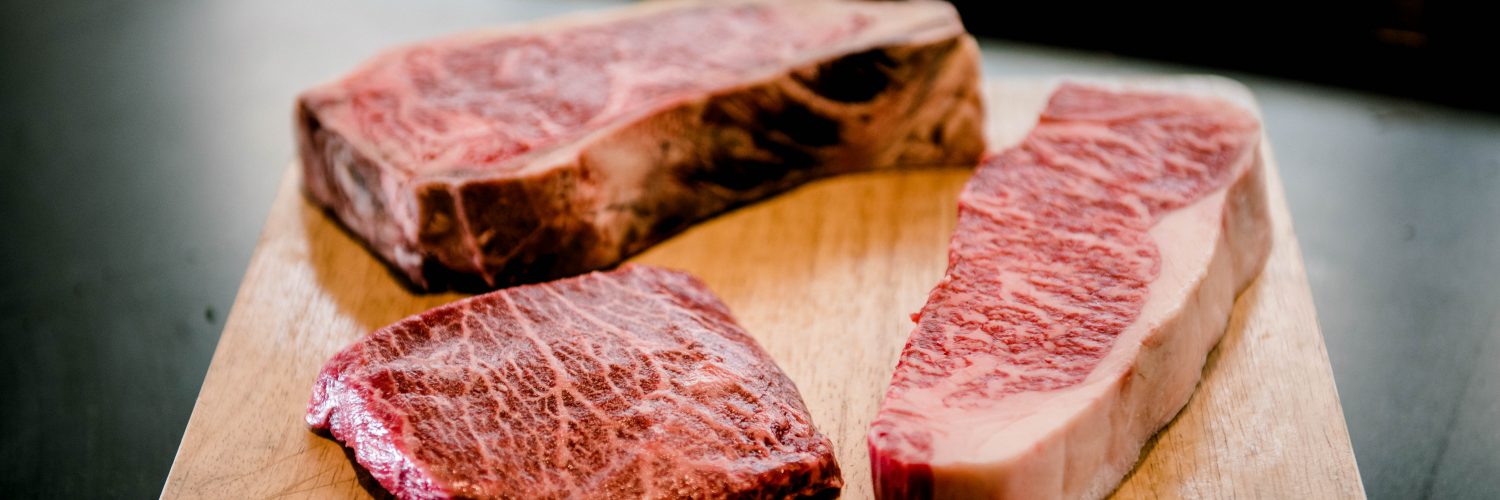Ever seen a 45-day dry-aged steak on the menu and wondered why everybody is banging on about old beef?

Meat master and executive chef of Nineteen at The Star Uday Huja explains everything you need to know about dry-aged beef and why you need to try it.
How does dry ageing steak work?
Dry ageing beef is the process of ageing uncovered meat in a temperature-controlled environment for a period of around 28 days or longer to achieve a depth of flavour and improve the texture.
“The natural water content of beef dilutes its flavour, so when you reduce that moisture, you end up with a much more intense, nuttier flavour and aroma,” Uday explains.
Contrary to what the name suggests, dry ageing doesn’t actually make the meat dry, thanks to the tenderisation that occurs naturally over time as enzymes break down some of the tougher muscle fibres and connective tissue. As the meat ages, it will form a tough rind around the outside of the meat, which is trimmed back to reveal a far more tender, juicy cut. “This is also why dry-aged steaks tend to be more expensive, because the yield is much lower,” Uday adds.
What’s the difference between wet-aged beef and dry-aged beef?
While the practice of hanging beef on the bone to age dates back hundreds of years, wet ageing is a product of modern times — more specifically, the invention of plastic.
“When you keep meat in a piece of plastic, it’s marinating in its own juices and this speeds up the ageing process,” Uday says.
“Around 90 percent of the meat you buy in the supermarket is wet-aged because it’s pre-packaged, which is often easier for suppliers to deal with and more convenient for consumers.”
“Wet ageing is effective at tenderising the meat, but it won’t have much of an impact on the flavour profile.”

Can I dry age beef at home?
Yes, but it’s not as simple as simple as sticking a steak in your fridge for a month. Uday says that dry ageing beef requires a specific microclimate and conditions need to be carefully regulated.
“At Nineteen, our dry ageing cabinet is maintained at about 2.5 degrees Celsius and 70 percent humidity,” Uday says. “We’ve found that’s the sweet spot for us – any more humid and the meat will rot, any less and the meat will dry out.”
The best cuts of beef for dry ageing are larger whole muscles on the bone with a decent fat cap, such as a rib eye, sirloin or short loin. “You wouldn’t attempt it with a piece of fillet or a skirt steak because it’s too lean,” Uday says.
“As the meat dries, it will shrink in size and form a hard rind around the outside, which you need to cut away before cooking. If the cut is too small, you’ll end up with nothing left.”

How long does dry ageing take?
A hotly debated topic among meat lovers, the minimum period for ageing beef is usually around 28 days, but some age theirs for 60, 90, or even 300 days.
Uday says the period for ageing depends on your palette – the longer you let the meat age, the more pronounced the flavour – but long periods can compromise the texture.
“We like to age our beef for around 45 days; that’s where we find a good balance between maintaining a good texture and developing enough depth of flavour,” he says.
Why is dry ageing beef suddenly so popular?
For a practice that dates back hundreds of years, dry-aged beef has really only captured our attention in the last decade. At Nineteen, Uday has seen demand surge for their 45-day dry-aged bone-in sirloin, which he puts down to customers showing more interest in the food on their plates.
“We’re definitely getting a lot more requests for dry aged beef, mostly from seasoned steak eaters, but for some people it’s their first experience.
“People love the theatre of seeing it hanging in the cabinet in the restaurant, and I think I think the interest is only going to grow as we become more educated about what we eat.”







